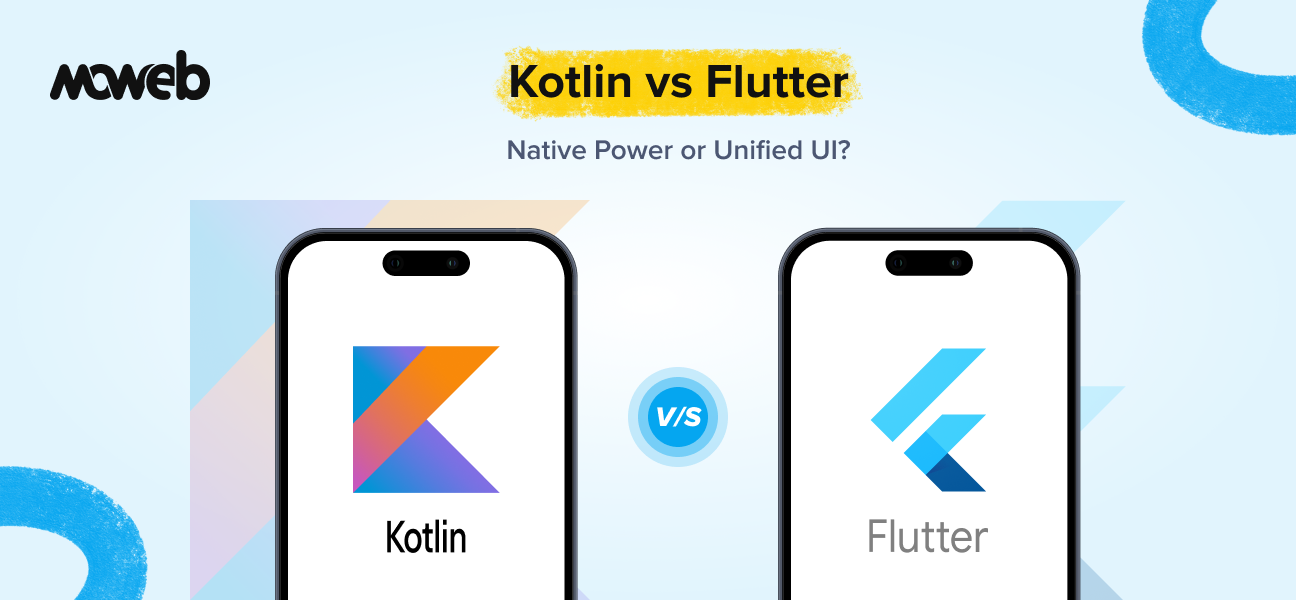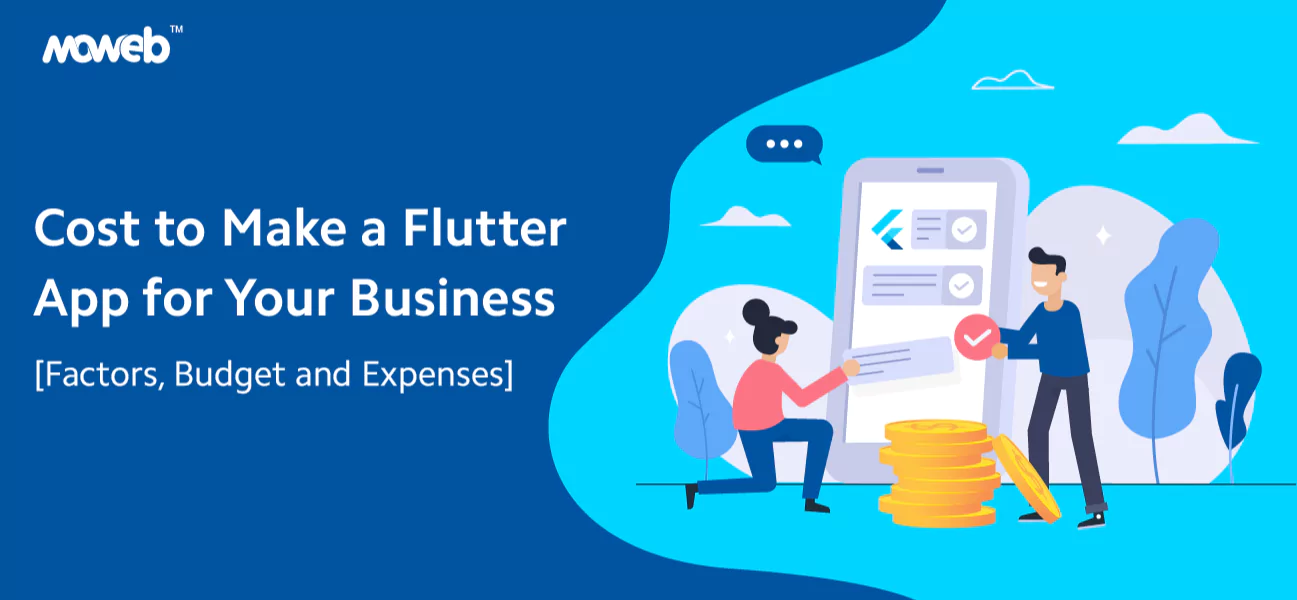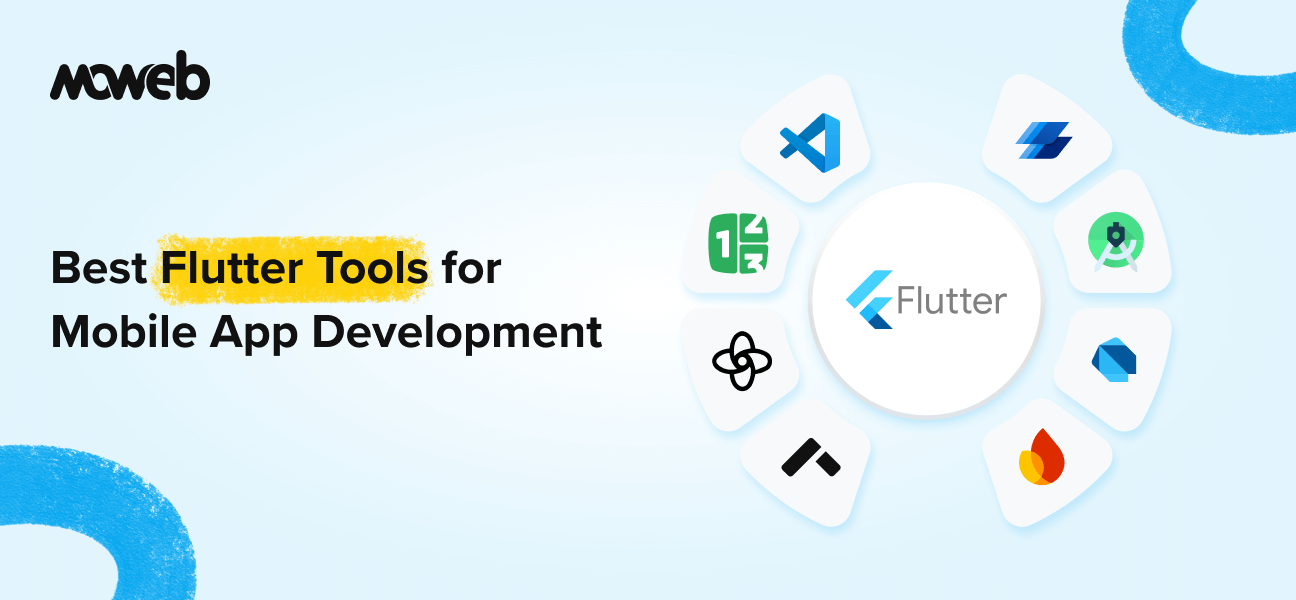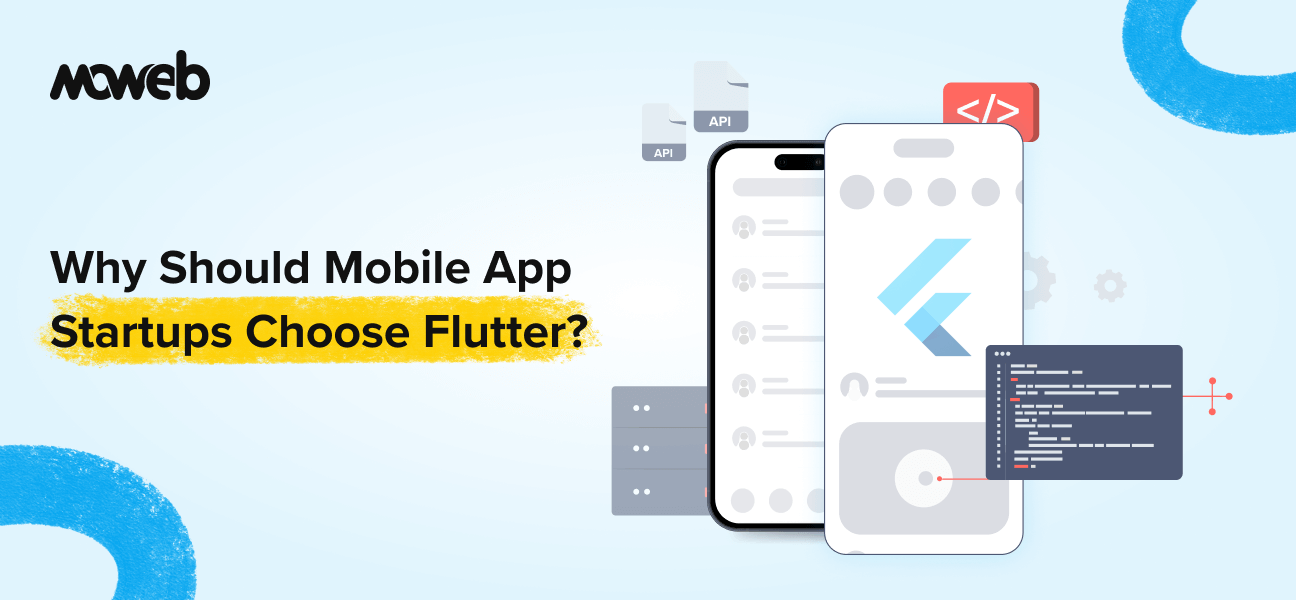
Businesses are no longer targeting just one platform. Instead, the focus is on delivering seamless experiences across Android, iOS, web, and desktop. Cross-platform app development frameworks make this possible, empowering teams to achieve faster time-to-market without duplicating effort.
When discussing cross-platform frameworks, Kotlin vs Flutter dominates the conversation. Both are popular solutions, but serve slightly different developer and business needs. While Flutter emphasizes a single codebase with consistent UI, Kotlin Multiplatform Mobile (KMM) focuses on sharing business logic while retaining native UI for each platform.
According to Statista, the demand for cross-platform app development tools is projected to grow by over 20% annually, with frameworks like Flutter and Kotlin KMM receiving increased adoption in both startups and large-scale enterprises. If you are torn between Flutter or Kotlin, this guide breaks down their strengths, limitations, and best use cases.
Two Powerful Tools for Cross-Platform Projects
If you’re evaluating Flutter vs Kotlin, both stand out for different reasons:
- Flutter: A unified UI toolkit from Google that lets you create apps for iOS, Android, desktop, and web with a single codebase. Its widget-based approach ensures consistent design.
- Kotlin with KMM: A JetBrains creation that allows teams to reuse shared business logic while building native UIs with Jetpack Compose for Android and SwiftUI for iOS.
In short, Flutter provides a consistent cross-platform UI, whereas Kotlin KMM provides native experiences with shared business logic.
Understanding Cross-Platform Development
Cross-platform development enables building apps that function across multiple systems (iOS, Android, web) without the need to rewrite the code for each.
Compared to native-first approaches, cross-platform offers:
- Performance trade-offs in some cases.
- UI consistency challenges across devices.
- Code reusability benefits through a single codebase framework.
Flutter and Kotlin act as multi-platform app tools. Flutter provides a complete UI + logic solution with the Dart framework, while Kotlin KMM emphasizes shared business logic and leverages platform-specific APIs when needed.
Flutter for Cross-Platform Development
Flutter is Google’s open-source framework designed for creating apps across mobile, web, and desktop.
Key Cross-Platform Strengths:
- Unified UI powered by highly customizable widgets.
- Hot reload feature for rapid development.
- Wide platform coverage, including iOS, Android, desktop, and web.
Limitations:
- Larger app size compared to native-built apps.
- Some dependency on third-party plugins for deep platform-specific access.
If you want deeper insights on why many startups choose Flutter, see this guide on Flutter for cross-platform app development.
Kotlin (with KMM) for Cross-Platform Development
Kotlin Multiplatform Mobile (KMM) is JetBrains’ approach to cross-platform development. It excels at allowing developers to reuse business logic while building native interfaces on each platform.
Key Cross-Platform Strengths:
- Shared code for data models, networking, and core logic.
- Platform-native UI layers via SwiftUI (iOS) and Jetpack Compose (Android).
- Great integration for developers already using Kotlin within Android projects.
Limitations:
- Requires teams to build UI separately for iOS and Android.
- Ecosystem is still less mature than Flutter.
This makes Flutter Kotlin multiplatform comparison crucial: Flutter focuses on full-stack consistency, while KMM doubles down on native experience with logic reuse.
Flutter vs. Kotlin: Cross-Platform Capabilities Compared
When it comes to Flutter vs Kotlin KMM, here’s a side-by-side look at their key features:
| Comparison Factor | Flutter (Dart Framework) | Kotlin (KMM) |
| Code Reusability & Speed | 100% code reuse, including UI + logic. Faster MVP launch. | Partial reuse. Business logic is shared, UI must be coded separately. |
| UI/UX Consistency vs Authenticity | Consistent design with customizable widgets. | Native UI ensures platform-specific authenticity. |
| Performance | Near-native with some overhead from the Skia rendering engine. | Native performance for business logic, no rendering compromises. |
| Ecosystem & Tooling | Pub.dev library ecosystem, Firebase integration, broader platform support. | Strong Android Studio support, JetBrains tools, and limited third-party add-ons. |
| Team Skills & Learning Curve | Dart language (easy transition for web and JS developers). | Requires Kotlin expertise plus platform-specific UI knowledge (Swift, Jetpack Compose). |
| Scalability & Maintenance | Easier updates across one codebase; risks of plugin dependency issues. | Platform-specific UI bugs, but the architecture allows long-term control and flexibility. |
CTA: Need Expert Help Delivering a Cross-Platform App?
Whether you’re inclined towards Flutter and Kotlin or still weighing the decision, our Flutter app development experts can help you choose the ideal approach. We have proven experience with multi-platform app tools and can build scalable, performance-driven apps aligned with your goals.
When to Choose Flutter?
Flutter makes sense if your project needs:
- A code reusability single codebase framework for faster launch.
- Rapid MVP builds for startups or cost-conscious businesses.
- Apps targeting mobile, desktop, and web integration.
- Consistent UI across all devices.
If you are curious about how Flutter stacks up against other frameworks, check out Flutter vs React Native: A Comprehensive Guide.
When to Choose Kotlin (KMM)?
KMM is a stronger choice when you need:
- Native UI design importance (using Jetpack Compose & SwiftUI).
- Teams already experienced with Kotlin/Android development.
- A focus on shared business logic without UI compromises.
- Apps relying heavily on platform-specific APIs.
This distinction, Flutter vs KMM, is critical. If you prioritize UI authenticity over a single UI framework, KMM wins.
Conclusion
The Flutter Kotlin debate doesn’t end with one being universally better. Instead, it comes down to project needs. Flutter is perfect for teams seeking end-to-end solutions with a single codebase, rapid iteration, and cost efficiency. And Kotlin KMM is best for native-first apps where UI should reflect platform-specific guidelines, while sharing logic to save time.
Ultimately, the Flutter vs Kotlin KMM choice depends on your goals: design uniformity vs platform authenticity, team expertise, and long-term scalability.
FAQs
1. Can Kotlin KMM fully replace Flutter for cross-platform development?
No, Kotlin KMM cannot fully replace Flutter because both serve different purposes in cross-platform app development. KMM focuses primarily on sharing business logic across platforms, while still requiring separate native UI development in Swift and Jetpack Compose. Flutter, on the other hand, provides a complete solution with unified UI and business logic using a single codebase. This makes Flutter more suitable for rapid development, while KMM is better for projects prioritizing native UI authenticity.
2. Does Flutter’s single codebase compromise iOS/Android design guidelines?
Flutter apps are built with customizable widgets that deliver a consistent user interface across Android and iOS platforms. While this approach ensures faster development, it may not always perfectly match the platform-specific design guidelines of iOS or Android. The result is a uniform look and feel, but sometimes the apps may lack the subtle platform-native elements. For businesses prioritizing consistency and speed, Flutter works well, while KMM supports platform-specific UI for greater authenticity.
3. How does Kotlin KMM handle platform-specific features compared to Flutter?
Kotlin KMM allows developers to directly access platform-specific APIs, letting them implement features using Swift for iOS and Kotlin for Android without major compromises. This offers greater control for device-specific integrations. Flutter, in contrast, relies on plugins and platform channels for native functionalities, which may sometimes increase dependency on third-party support. While both approaches enable smooth feature implementation, KMM ensures deeper platform-native integration, whereas Flutter provides faster implementation at the cost of extra plugin reliance.
4. Is Flutter suitable for apps requiring heavy native API usage?
Yes, Flutter can be used for apps that require heavy native API usage, though accessing these might involve additional steps. Flutter uses platform channels and third-party plugins to communicate with native features, making it flexible but sometimes dependent on community-developed solutions. For many use cases, these plugins suffice; however, for highly complex or custom API integrations, developers may need to write extra native code. In comparison, KMM provides more direct access to native APIs.
5. Which offers faster time-to-market: Flutter or Kotlin KMM?
Flutter typically ensures faster time-to-market because it allows developers to build apps with a single codebase framework covering UI and business logic. This eliminates the need for separate development for Android and iOS, helping businesses launch MVPs or products quickly. Kotlin KMM, however, requires a separate native UI implementation, which increases development time despite sharing business logic. For startups and projects with tight deadlines, Flutter is generally better suited, while KMM caters to long-term, native-first strategies.
Found this post insightful? Don’t forget to share it with your network!





